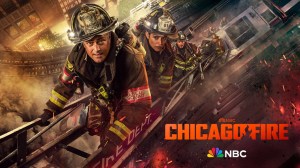Cartels. They are the focus of countless movies and TV shows. It seems all we know about them is that their world revolves around money, drugs, guns, and murder. In a new memoir, however, a former cartel hit man is revealing all the things he saw during his time on the inside, and frankly, it’s terrifying.
Martin Corona, once a hit man for a Tijuana cartel, cooperated with the U.S. government in prosecuting members of the cartel, and now he and his family currently reside in witness protection.
Videos by PopCulture.com
Corona partnered with Tony Rafael to write a tell-all book aptly titled Confessions of A Cartel Hit Man, which recounts his life and his time as a sicario, or hit man, for a Mexican cartel.
In an excerpt made available by Men’s Journal, Corona recounts getting into the cartel and walks the reader through his first hit, which required him to cross the border and execute an assassination on men who worked for infamous cartel leader El Chapo.
He also talks about “The Office,” which was the highly recognizable area of Tijuana where his cartel chapter operated from.
Speaking about it, Corona says, “The Office was in one of Tijuana’s best neighborhoods, the equivalent of Beverly Hills, or Sutton Place in New York. Our neighbors were judges, politicians, businessmen, and old-money families that made their fortunes a hundred years ago in gold, oil, cattle, and crops.”
He continues, “Of course, everyone in the neighborhood knew exactly what was going on behind the walls of the Office. They couldn’t help but see the heavily armed 24-hour security force that patrolled the grounds or the caravans of SUVs, packed with armed men, coming and going in broad daylight. But the neighbors kept their mouths shut because we didn’t have any dealings with them.”
Up Next: Cartels’ Favorite Kinds Of Killers Revealed
Scroll Down For More Revealing Details About The Cartel
Cartels Mostly War With One Another
Law enforcement does spend a lot of time chasing cartels, but as Corona tells it, the cartels spend most of their wars engaging rival cartels.
He writes, “When I raised my hand to join the Tijuana cartel as a sicario, or assassin, I didn’t care that the price for living like a king was killing people. The people the cartel targeted were no better or worse than we were. They were just adversaries.”
Corona continues by saying, “Everybody on both sides knew that competition in the drug trade basically comes down to how many people on the other side we can kill before they give up. And that was our goal. Kill as many of them as we can until the attrition just wears them down.”
Proving he wasn’t the least bit naive, Corona says, “Of course, they were trying to do the same to us.”
Literally Anybody Could Be Involved
Hearing that the cartels mostly war within themselves almost gives you some comfort, if you can somehow get past the thought of the innocent casualties.
Then, however, Corona drops the little tidbit that the cartels are much bigger and more connected than people realize.
In regard to who could be working for a cartel, he says, “The cartels would not be able to ship a billion dollars of dope into the U.S. every year without a huge network on U.S. soil. It could be anybody.”
Then he goes on to describe the types of people that could be working for a cartel, and it’s frightening. “A middle-aged mother handling money and phone calls for the cartel in Palmdale. A construction worker standing outside a Home Depot in L.A. A couple of teenagers slinging dope in Compton,” he says. “A civilian employee of the LAPD. Someone on staff in a city council member’s office. A Border Patrol agent.”
Border Patrol Doesn’t Help Much
Ok, so maybe anybody could be working for the cartel. We still have the border patrol down there making sure none of the really dangerous guys can cross either direction, right? Wrong.
Corona says, “The Border Patrol guys saw the plates and barely gave us a second look when we flashed our California IDs. The border is so loosely enforced that the cartels can move anything they want through it.”
He also says that it wouldn’t have taken much for them to catch him if they’d only put in a modicum of effort, explaining, “I was in the U.S. law enforcement computer system as a parole jumper. A few keystrokes on a computer would have shown that.”
They Can Get Firearms Easily and Quickly
Not only can cartel members cross back-and-forth between the U.S. and Mexico with ease, but Corona seems to suggest that they can very easily access weapons as well.
While describing his first big hit, he says, “We checked in at a Ramada Inn and called the Border Brothers at the phone number that David had given me. An hour later Chino and Chuy showed up at the room with our weapons: a fully automatic Uzi submachine gun equipped with a huge silencer, an M1 carbine, a .357 revolver, and a couple of 9mm semiautomatic pistols.”
An hour. That’s all the time it took for Corona and his team to get more than enough weaponry for their hit.
It didn’t stop there, though. Corona says they needed something else and all they had to do was make a call and within hours they had another gun. “I called David and told him that I needed another weapon. A few hours later, a fully automatic TEC-22 showed up at the Ramada,” he explained.
They Know How To Costume For A Hit
The last significant point touched on in the excerpt, is that the cartels train their hit men to be able to dress for the part.
“I picked out clothes that would send the message that we were not gang affiliated — hoodies in weird colors like brown, yellow, black, and green. To a gangster, those colors mean nothing. Casuals,” Corona said.
Blending in was only part of the benefit, however, as their outfits were also arranged so that they could pull off the job, change quickly, and be on about their business without anyone suspecting them
Corona explained, “Then we got sweatpants and shorts to wear under them. The idea was that right after we did the hit, we’d strip off the jackets and sweatpants and dump them. After the shooting, the radio call would go out looking for three Hispanics in hoodies and sweatpants. By the time the units got that information, we’d be in T-shirts and shorts looking like every other Hispanic on the street.”
To read more about Corona’s life in the cartel, you can pick up his book Confessions of a Cartel Hit Man when it comes out in July.









